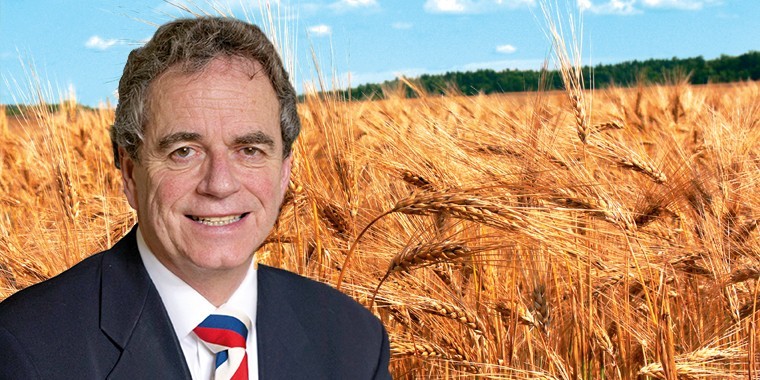I ought to take up fortune telling. Last month when we were at the low point of £190 for May wheat futures (£27 off its January high), with many ‘doomsters’ suggesting the big prices were over and it was all downhill to meet the new crop values, I said: “Nor do I think we have seen the last of spikes in old crop prices”. By the middle of April those May futures were at £202, £12 up. I rest my case. Don’t blame me if you don’t sell some at these increased values.
I must have been on top form last month, as I also mentioned that for new crop: “We have not yet had a proper weather story anywhere…my instinct tells me that we will get one somewhere”. Well, guess what? At long last the dry weather in North and South America is approaching ‘drought’ status.
Brazil’s first maize crop won’t even meet its own domestic needs. Over half of its second famous ‘Safrinha’ maize crop was planted late and is not yet complete. Brazil is now having to import maize from Argentina. USDA now acknowledges that the US maize plantings are much reduced on last year. From the US Midwest right up to the Canadian border it’s abnormally dry and, like us, they are still getting below average temperatures and frosts.
So, our old crop prices have firmed up again and so they should, as there is next to nothing left of anything on farms and there is still a long, long way to go until harvest. We have no liquidity in the old crop market as quite simply we are left with only the “needy and the greedy” to deal with. The “needy” are the feed compounders who are frightened to buy anything until someone gives them an order for the finished product and they still don’t want to carry over even one tonne of wheat that may be £35 dearer than new crop. The “greedy” are those few farmers who still have something left to sell but, having missed the top of the last market, are now hanging on in the hope that somehow it will regain all it lost.
I don’t think it will get back to those heights, which were the highest seen in the 21st century. Wheat is now £12 off the bottom and £15 off the top, but you don’t want to miss it for a second time, so start selling some. The lack of liquidity applies to new crop as well. There was a recent rush to sell new crop malting barley by Danish co-ops but that stopped when they realised that the barley planted over Easter hadn’t emerged yet, because it’s so cold.
In the South, on chalkland, the early planted spring barley looks good and is all emerged. The later-sown needs sun and some warm rain. Our best barley was planted about two weeks earlier than last year but it’s dormant for now. Conversely, I would expect to see winter barley coming into ear in early May, but I don’t expect I will. A lot can change, but it does not look like being an early harvest, unless it’s for the wrong reason.
China has been quiet for a change, so between now and next month I expect they will have done something spectacular in the world grain market. Watch this space.
My main focus this month is on Russia, as they seem to have made a real “dogs’ breakfast” of their old crop marketing. They imposed unrealistic export taxes which sent the wheat market into orbit over Christmas and the New Year. But that choked off their own exporting to the extent that they missed the top of the international wheat market, which they had created, and finished up trying to dump half a million tonnes of wheat at about 30 dollars per tonne off the top.
Mr Putin is seeking re-election in September; he’s out-lasted our past four Prime Ministers, so keeping domestic price inflation down will be more important than getting Russia’s marketing right. So anything could happen until the end of September. Also, Russia is massing large military forces on their border with the Ukraine and Crimea, so some sort of incursion looks likely. Maybe that is why crude oil just jumped five dollars per barrel. So, there is big uncertainty with the world’s biggest exporter of wheat.
At home the lockdown has begun to ease. This is bound to create more demand for food and drink, which must have a beneficial effect upon demand for cereals and oilseeds. Currency is helping potential exports, with the sterling exchange rate about 87 pence to the euro. We have had AHDB estimating a UK new-crop wheat harvest of 14.57 million tonnes, which would be a massive increase on last year’s 9.61 million tonnes. A number of people think it will struggle to reach the five-year average of 13.67 million tonnes. But it’s all irrelevant at this stage and should not be relied upon as a basis for marketing strategy because, as we well, know our crop is made, or not, in May, June and July.
Lastly, I attended a company health and safety training course this week and discovered that during the past year 111 people lost their lives in accidents at their place of work, whilst 6,000 lost their lives at home, thus proving that you are safer at work than at home!




